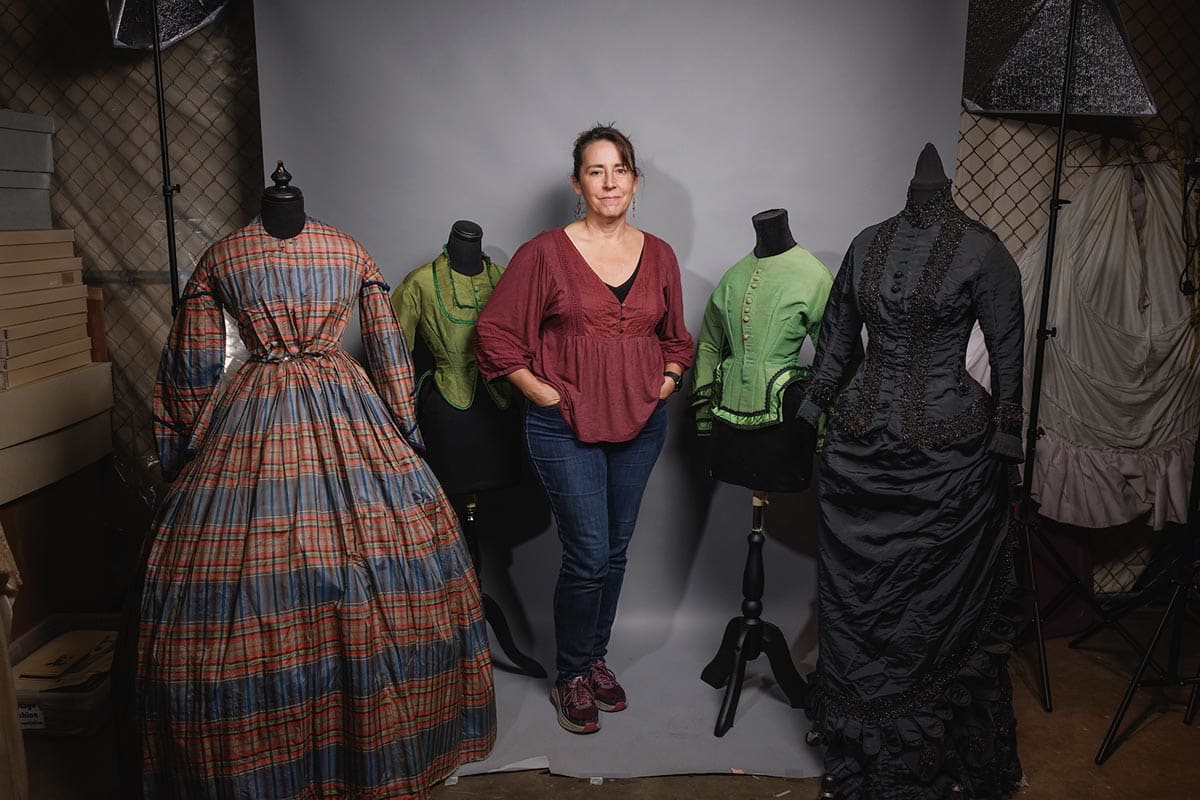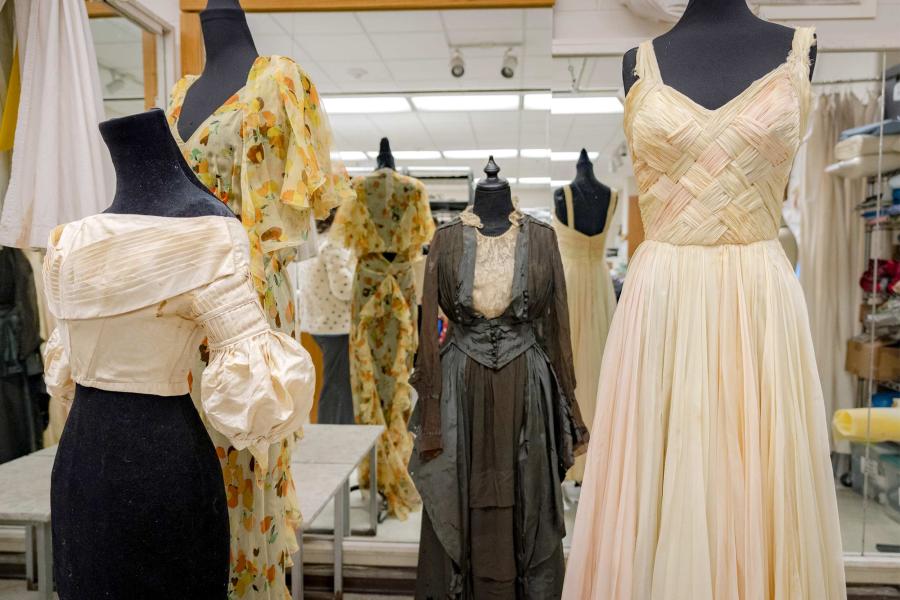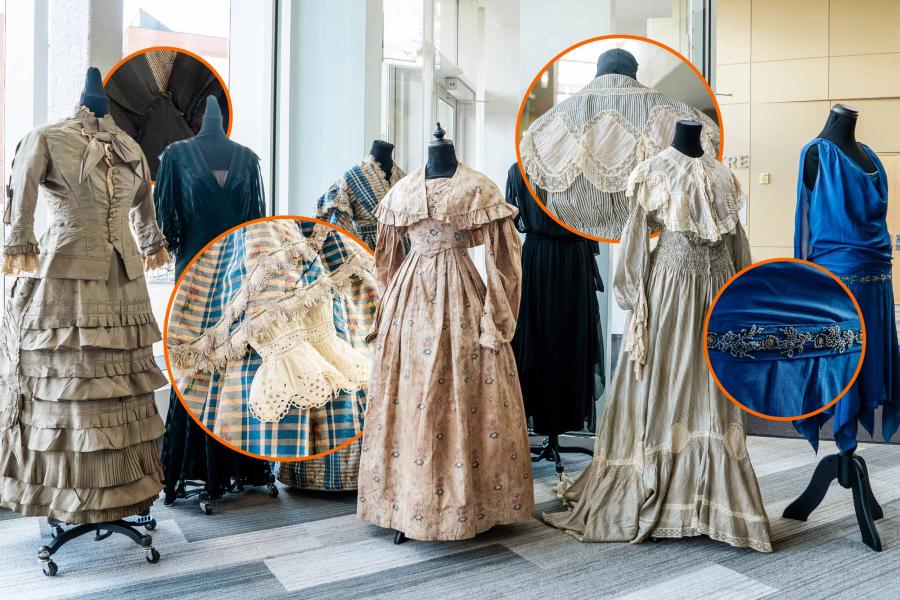Arsenic bodices
The toxic chemical arsenic gave a vibrant green hue to clothes, books and wallpaper. People exposed to arsenic experience symptoms like nausea, diarrhea and abdominal pain. It can cause cancer, heart disease and even death.
But during the Victorian Era, people were willing to risk their lives – and the lives of others – for the sake of looking good.
“These two particular bodices are from the mid-1800s, so they knew at the time that arsenic was poisonous,” Linton, an associate professor of costume technology, said. “People would actually kill each other with it, but it dyed this beautiful green.”
Linton worked with Sue Donovan, a book conservator in Special Collections at UVA Library, and recent graduate Charlie Webb, a student intern at the time, to study the bodices and ensure they did not contain traces of arsenic. It’s fortunate they don’t, since there are reports that a woman in her arsenic-dyed dress could poison people in seven different ballrooms.
As dangerous as an arsenic gown could be to the woman wearing it, it was even more perilous for the person who made it.
“It’s kind of like fast fashion today. We don’t consider the people who are endangering themselves to make what we’re wearing because it doesn’t affect us,” Linton said.















